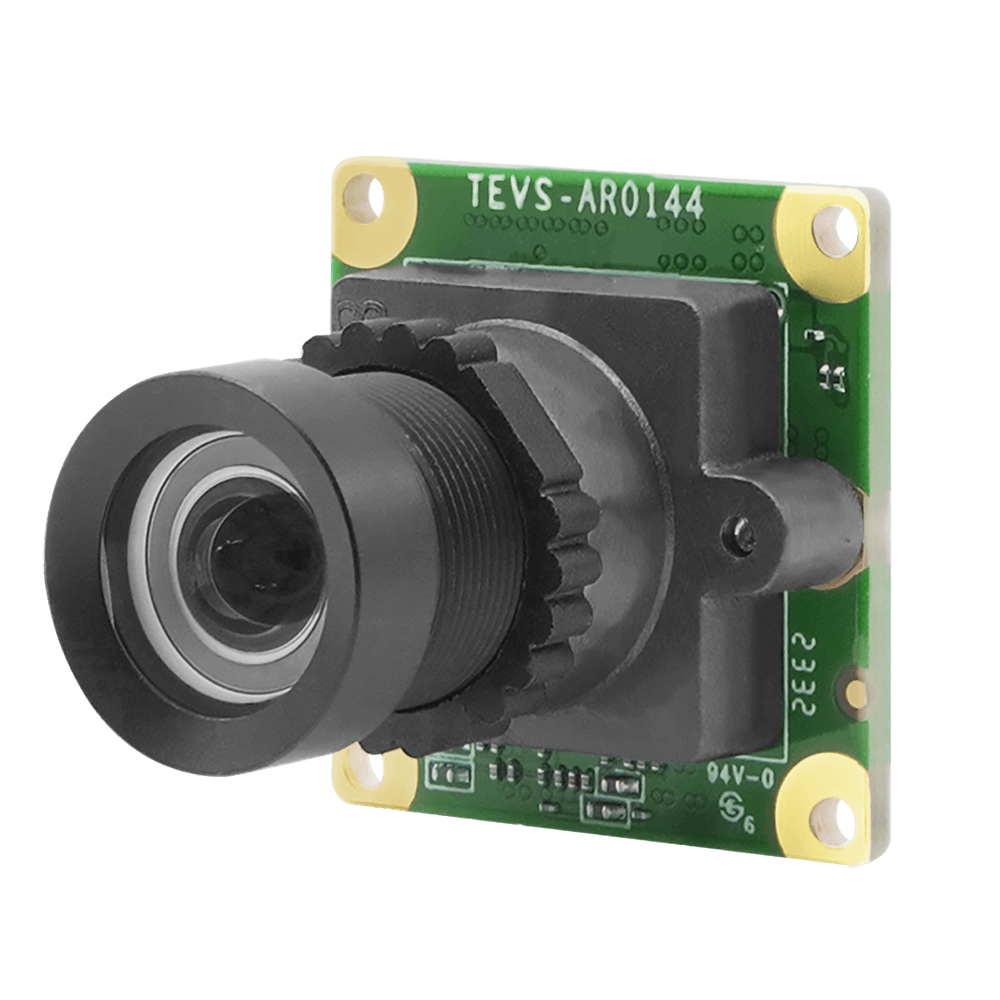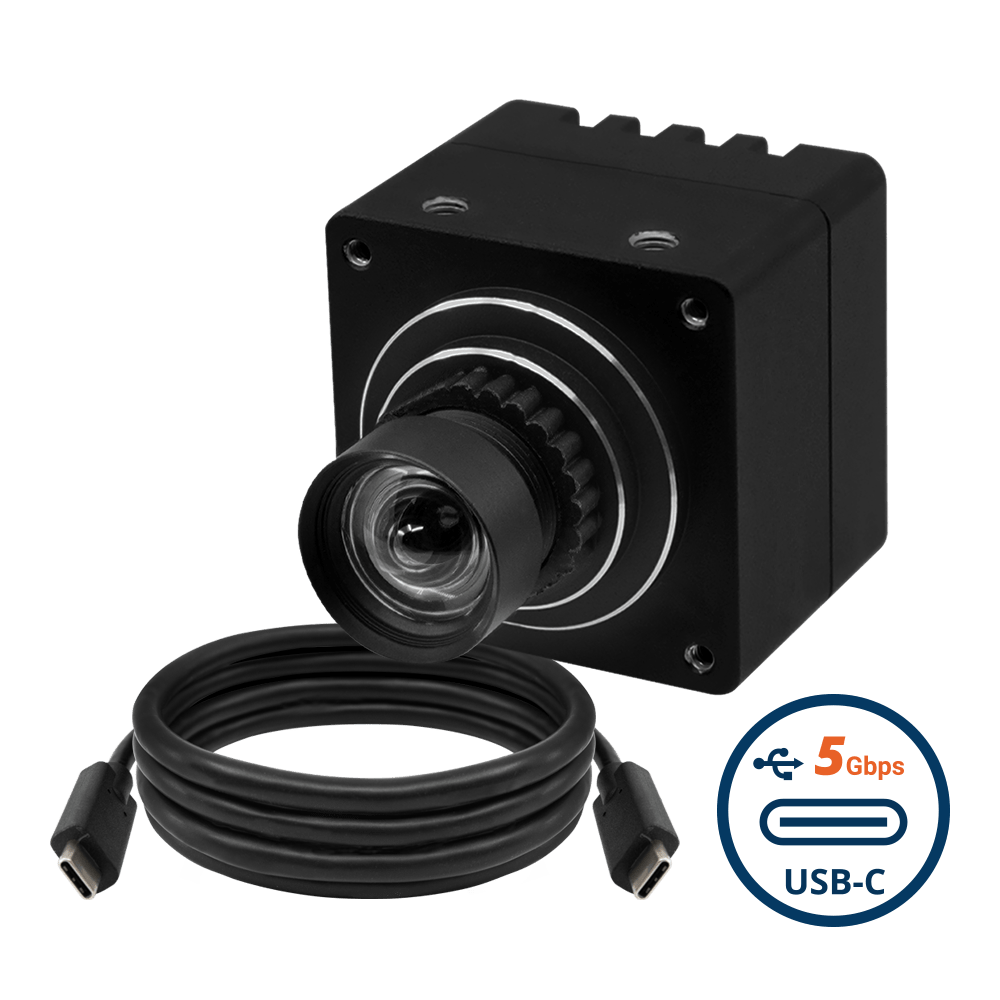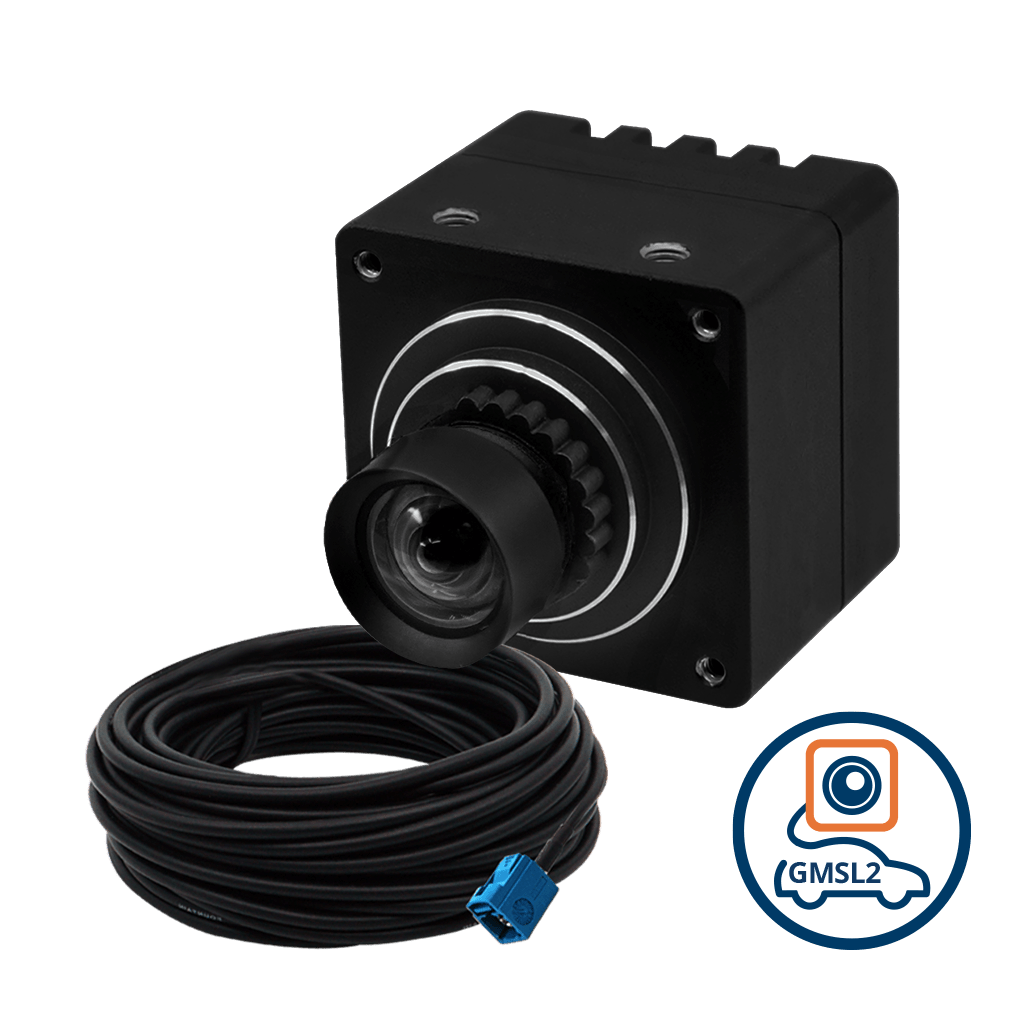When it comes to embedded vision systems, having the right camera is crucial. The camera is the eye of the system, capturing essential data that drives functionality, accuracy, and overall performance. Developing a custom camera from scratch can be an arduous and time-consuming process.
Imagine a developer spending countless hours designing, prototyping, and testing a custom camera – only to encounter unforeseen issues that delay the entire project. This is where partnering with imaging experts like TechNexion becomes invaluable.
Leveraging off-the-shelf cameras can significantly accelerate the development process. It can ensure quick integration and reliable performance. This blog post discusses the advantages of using off-the-shelf cameras in vision systems.

We will examine their standout features, benefits, and diverse applications across industrial and commercial sectors. Join us as we uncover the technology driving the future of robotics.
Challenges of Developing a Camera on Your Own
Developing a camera for an embedded vision system on your own is fraught with challenges. One of the primary obstacles is the time commitment. The process can take more than a year, from initial design to final testing. This extensive timeline can delay product launches and increase development costs.
Creating a camera also requires expertise in both hardware and software. Designing the camera hardware involves selecting the right sensors, lenses, and other components. Each component has its own set of unique specifications and requirements.
Beyond hardware, you also need to develop or adapt software drivers to ensure the camera can communicate effectively with the rest of the system. This requires a deep understanding of embedded software development and image processing algorithms.
Sourcing materials is another significant challenge. Sensor vendors typically supply their products in large volumes, often requiring orders in the tens of thousands. A single vision system developer usually needs far fewer units. This makes it difficult to obtain the necessary components. This volume requirement can lead to high costs and long lead times, further complicating the development process.
Lastly, different use cases require different components. Each variation demands its own set of drivers and software. For instance, a camera intended for industrial automation might need a high frame rate camera and robust housing. On the other hand, camera for medical imaging might prioritize resolution and color accuracy. Developing these components and their associated software from scratch can be tedious and error-prone, requiring extensive testing and iteration.
What Are Off-the-shelf Cameras?
Off-the-shelf cameras are pre-designed imaging devices. The cameras can be readily integrated into a vision system without the need for extensive customization or development.
Off-the-shelf cameras come with standardized interfaces and drivers, making them easy to incorporate into various applications. For example, TechNexion offers a range of ready-to-use cameras, including USB, MIPI-CSI 2, FPD-Link III, and GMSL2 options. These cameras are designed to meet industry standards, ensuring compatibility and ease of use.
Developers can significantly reduce development time and costs while benefiting from reliable, tested solutions that can quickly be deployed in their vision systems.
Advantages of Using Off-the-shelf Cameras
Here’s a detailed look at the benefits of using off-the-shelf cameras for embedded vision systems:
Ready to Integrate Camera Modules
One of the most significant advantages of off-the-shelf cameras is their readiness for integration. These cameras are designed to be easily incorporated into vision systems, eliminating the need for extensive prototyping and development work. This readiness translates to a substantial reduction in prototyping time.
Developers can quickly test and validate their systems using pre-built camera modules, which speeds up the overall development cycle. Faster prototyping means quicker iterations. This leads to a faster time to market for the final product. For companies competing in fast-paced industries, this accelerated timeline can be a crucial competitive advantage.
Expert Guidance from Imaging Partners
Working with an experienced imaging partner like TechNexion provides valuable support beyond just supplying camera modules. These partners offer expert guidance on selecting the appropriate components, such as sensors, lenses, and processors.
Choosing the right sensor is vital for capturing the required level of detail and ensuring the camera performs well under various conditions whereas lens selection impacts factors like field of view and image clarity. The processor determines how quickly and efficiently the system can process the captured data. TechNexion’s expertise in these areas can help developers make informed decisions and optimize their vision systems for performance and reliability.
Diverse Camera Portfolio
Off-the-shelf camera suppliers provide a diverse portfolio of camera options, catering to a wide range of applications and processing platforms. Whether the application requires high-resolution imaging, low-light performance, or Near IR imaging, there is likely a pre-built camera that fits the needs.
TechNexion, for instance, offers rolling shutter and global shutter cameras. While the former is preferred in most embedded vision applications, the latter is used in systems where the target object is moving fast. This variety allows developers to select the best camera for their specific requirements. This, in turn, ensures optimal performance of the embedded vision system.
Sensors in TechNexion’s camera portfolio
Cost-Effectiveness
Developing a custom camera in-house involves significant time, effort, and resources. The process includes designing the hardware, developing software drivers, sourcing materials, and extensive testing and validation. These activities are not only time-consuming but also add to the cost in the form of people, components, software, etc. Off-the-shelf cameras provide a cost-effective alternative.
With off-the-shelf cameras, companies can save on the development costs associated with creating a camera from scratch. Furthermore, suppliers like TechNexion benefit from economies of scale. They source components in large volumes and pass those savings on to their customers.
Simplified Integration and Maintenance
Off-the-shelf cameras are designed with standard interfaces and drivers, simplifying the integration process. Developers do not need to spend time creating custom drivers or dealing with compatibility issues. This standardization also makes maintenance and updates easier. This is because the camera modules come with established support and documentation.
Reliability and Proven Performance
Off-the-shelf cameras from reputable suppliers like TechNexion come with a track record of reliability and proven performance. These cameras have been tested and validated in various applications. This guarantees that the cameras meet industry standards. Moreover, our cameras are compliant with necessary standards such as FCC, CE, RoHS, and REACH.
Focus on Core Competencies
By using off-the-shelf cameras, companies can focus on their core competencies rather than diverting resources to camera development. This focus allows developers to concentrate on optimizing their vision systems and enhancing other critical aspects of their products.
Leveraging the expertise of imaging partners like TechNexion frees up a significant chunk of valuable time and resources. This enables companies to innovate and deliver superior products to their customers.
Disadvantages of Off-the-shelf Cameras
While off-the-shelf cameras offer many advantages, they are not without their limitations. These include:
Limited Configurations
One of the primary disadvantages of off-the-shelf cameras is the potential lack of exact configurations. The specific form factor, interface, or lens mount needed for a particular application might not be readily available. For instance, a developer might need a compact camera with a specific lens mount that is not offered in the standard product lineup.
Although customization efforts can address these issues, certain features or specifications might still need to be sacrificed at times. This can limit the camera’s suitability for highly specialized applications to a great extent.
Upfront Capital Investment
Procuring off-the-shelf cameras requires an upfront capital investment. Developers need to purchase samples or a few cameras at the beginning of the project to test and validate their integration into the vision system. This initial cost can be a barrier, especially for smaller companies or startups with limited budgets.
External Dependency and Support
Another significant drawback is the dependency on external vendors for support and integration. Reliance on the vendor for technical support and integration assistance can introduce delays and challenges.
If issues arise during integration or customizations are needed, developers must rely on the vendor’s availability and expertise for resolution. This external dependency can be particularly problematic if the vendor’s support is slow or insufficient. At TechNexion, we take all the necessary steps to ensure our customers get the right engineering support throughout the engagement – from camera selection and integration to prototyping and mass manufacturing.
Potential for Feature Compromises
Even with customization options, off-the-shelf cameras might not fully meet the specific needs of every application. Certain advanced or niche features might not be feasible to implement in an off-the-shelf solution. This can result in compromises on critical functionality.
For example, a camera intended for a high-speed industrial application might lack the required frame rate or robustness in an off-the-shelf model. To achieve a high frame rate, you need to customize the camera to crop the images or reduce the ROI (Region Of Interest) at a given bandwidth, This in turn means that your dependency on the imaging partner increases.
TechNexion has taken an approach where we offer enhanced control and configuration of the cameras using VizionSDK, allowing customers to utilize more advanced features through C, C++, or Python.
Integration Complexity
While off-the-shelf cameras have standardized interfaces and drivers, integrating them into a unique vision system can still be challenging. Compatibility issues, driver conflicts, or performance discrepancies can still arise. This might require additional effort to troubleshoot and resolve. This complexity can offset the time and cost savings of using off-the-shelf cameras, especially in highly customized applications.
TechNexion – Off-the-shelf Cameras for Every Application
TechNexion offers a diverse portfolio of off-the-shelf cameras tailored for various applications. The range includes cameras with sensors like AR0234, AR0521, AR0822, and AR1335, providing options for different resolutions and performance needs.
TechNexion’s cameras come with various interfaces, including USB, MIPI-CSI 2, FPD-Link III, and GMSL2, and offer different lens mounts, ensuring compatibility and flexibility for any vision system. Whether you need high-speed, high-resolution, or global shutter, TechNexion has a solution ready for integration.
Contact us today to explore how our cameras can enhance your vision system capabilities.
Related Products
Get a Quote
Fill out the details below and one of our representatives will contact you shortly.



